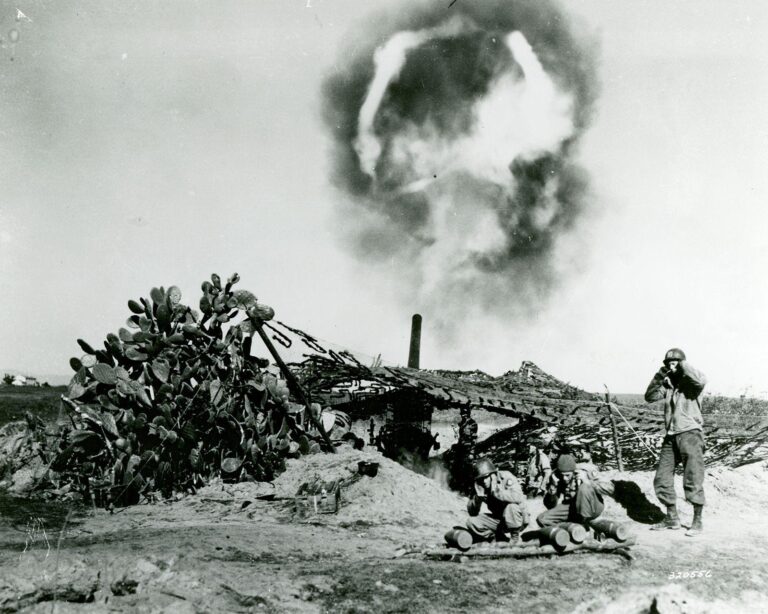For decades, tales of World War II battles and bygone eras echoed through family gatherings, painting vivid pictures of Italy’s rugged landscapes and historic towns. These stories, recounted by one son’s father, have sparked a lifelong fascination and inspired plans for dream trips to the very places where history unfolded. In this article, we explore how personal memories of WWII narratives have transformed into a passionate itinerary, blending heritage, history, and travel aspirations in the heart of Italy.
Childhood Memories Fuel a Deep Connection to Italy’s WWII History
Long before visiting Italy became a dream, the stories my father shared around the dinner table painted vivid pictures of wartime resilience and hope. His firsthand accounts of Allied soldiers marching through cobblestone streets, the distant echoes of artillery, and the quiet bravery of the Italian people left an indelible mark on my childhood imagination. These memories transcended history books; they became living narratives that connected me deeply to Italy’s landscapes, towns, and enduring spirit amid the turmoil of World War II.
Now, as I map out my travel plans, I’m drawn to places that carry the weight of those stories. From the rugged hills of Monte Cassino to the quaint villages that bore witness to liberation, my itinerary reflects a personal pilgrimage. Key locations I aim to explore include:
- Ostuni – Known as the “White City,” where my father once described soldiers seeking refuge.
- Florence – Rich in art but scarred by wartime bombings and resistance efforts.
- San Pietro Infine – A site of fierce battles that symbolize sacrifice and rebirth.
| Location | Historical Significance | Personal Connection |
|---|---|---|
| Monte Cassino | Major battle site of WWII | Father’s stories of conflict and perseverance |
| Florence | Art and cultural preservation during war | Inspired by tales of resilience |
| San Pietro Infine | Destroyed village, symbolizing sacrifice | Memory of liberation and hope |
Tracing the Footsteps of a Soldier Through Iconic Italian Battle Sites
Visiting the rugged hills of Monte Cassino or walking through the solemn grounds of Anzio, one can almost hear the echoes of cannon fire and the determined footsteps of soldiers long gone. These iconic battlegrounds in Italy are not just historical landmarks but living memorials, where history buffs and descendants alike can connect with the personal sacrifices of World War II. The weathered ruins, combined with meticulously preserved war cemeteries, create a tangible link to the past, allowing visitors to experience firsthand the scale and significance of these events that shaped modern Europe.
For those planning meaningful journeys, several key sites stand out as essential stops:
- Monte Cassino Abbey: A strategic fortress fiercely contested during the Allies’ push northward.
- Omaha Beach, Normandy’s Italian counterpart: A poignant reminder of the bravery during the southern Italian campaign.
- Ortona: Known as the “Italian Stalingrad,” where intense urban combat unfolded.
- Rome-Arno Cemetery: The resting place for thousands of Allied soldiers, providing quiet reflection.
| Site | Significance | Visitor Tip |
|---|---|---|
| Monte Cassino | Historic abbey battle site | Guided tours recommended |
| Ortona | Major urban warfare location | Visit the Museum of the Battle |
| Rome-Arno Cemetery | War graves and memorials | Perfect for quiet reflection |
| San Pietro Infine | Destroyed village rebuilt-battle site | Explore the open-air museum |
Curating a Personalized Itinerary That Blends History with Authentic Italian Experiences
Blending Italy’s rich history with genuine cultural immersion demands more than just ticking off famous landmarks. It means weaving a travel experience that honors the past while inviting travelers to engage deeply with the local way of life. Whether wandering through the cobblestone streets of Florence where Renaissance art thrives or savoring a family-cooked meal in a countryside villa near Siena, the goal is to capture the essence of Italy that historic accounts often miss. Incorporating visits to WWII memorial sites and battlegrounds adds layers of emotional context, transforming a simple tour into a meaningful journey. To personalize such an itinerary, one might consider ideas like:
- Joining guided walking tours led by local historians who connect stories from the war to present-day landmarks.
- Booking stays in agriturismos or boutique inns to experience authentic hospitality beyond the typical hotel.
- Participating in regional cooking classes that explore traditional recipes passed down through generations.
- Visiting small museums or archives less known to tourists but rich in personal wartime narratives and artifacts.
Effortlessly balancing reflection and discovery, a thoughtfully curated itinerary transforms Italy into a living museum and a vibrant stage of everyday life. From tasting truffle-based dishes in Umbria to attending local festivals described in family stories, each experience fortifies the connection between historical memory and present-day authenticity. To offer a snapshot of how an itinerary might unfold, here is a simplified outline presenting key elements:
| Day | Location | Highlight |
|---|---|---|
| 1 | Rome | Visit WWII bunkers & Trastevere culinary tour |
| 2 | Florence | Renaissance art walk & local artisan workshop |
| 3 | Siena | Countryside villa stay & traditional Tuscan cooking class |
| 4 | Umbria | Truffle tasting & visit to WWII memorial museum |
| 5 | Assisi | Historic sites tour & evening local festival participation |
Insights and Conclusions
As the echoes of his father’s World War II stories continue to resonate, the author’s plans to explore Italy represent more than just a travel itinerary-they mark a personal journey through history and heritage. With each dream trip on the horizon, these expeditions promise to deepen the connection between past and present, offering a meaningful way to honor the legacy of those who lived through the conflict. For travelers inspired by similar family histories, Italy remains a timeless destination where history and memory intertwine.




